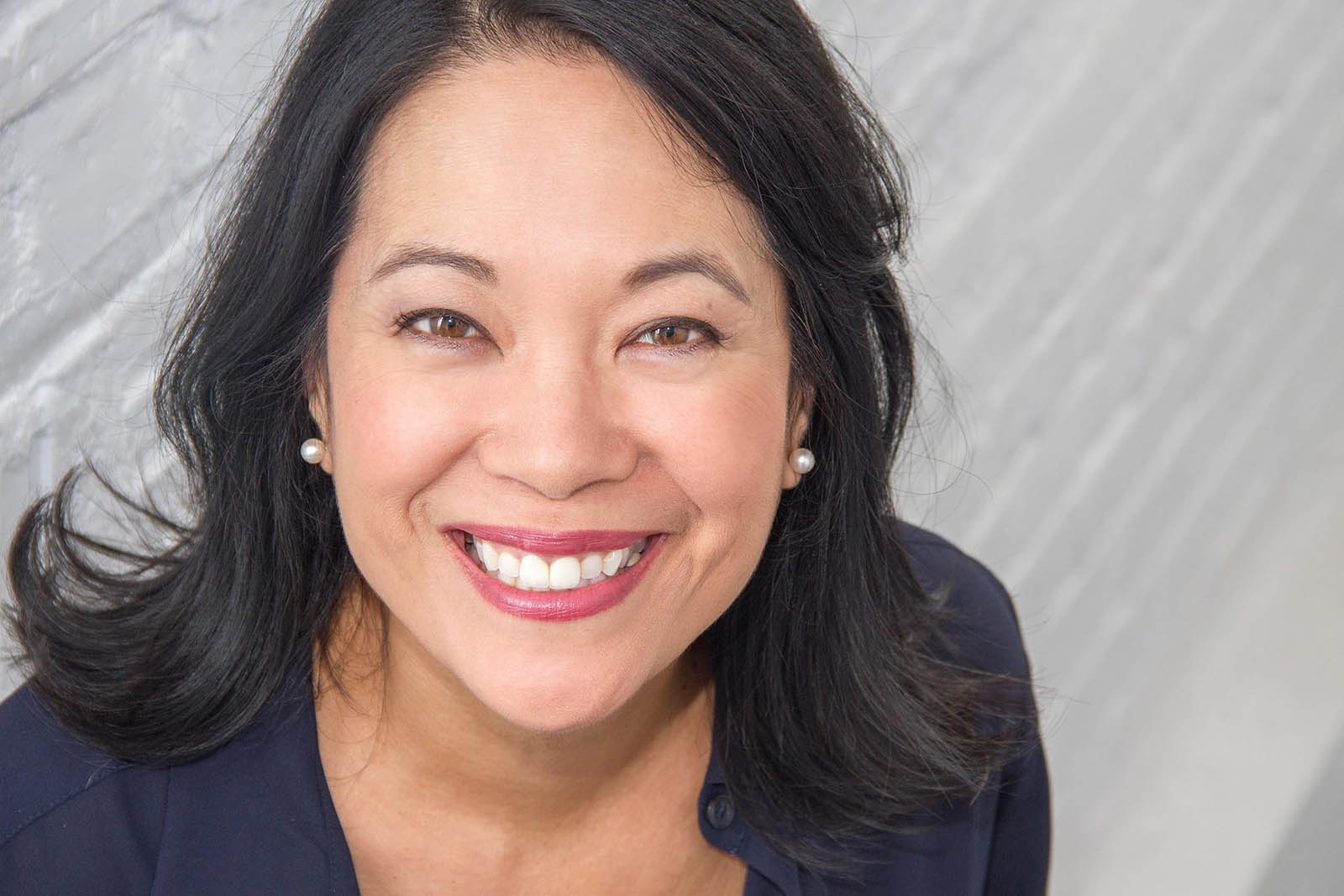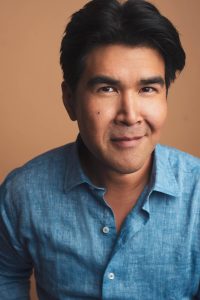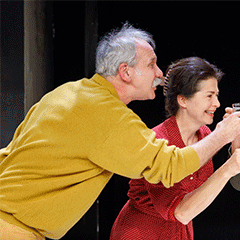Shakespeare Didn’t Just Write White Characters
In the second season of our project of American – Hungarian collaborations, we would like to continue to deal with the problem of how to approach the question of PC (political correctness) when it comes to the performing arts. What is “diversity” and how diversity appears? Who are the performers, directors, writers? How can we reconcile aesthetic freedom and the ethical need for diversity? These are burning issues today that László Upor explores with American artists, curators, and teachers of artistic higher education in the interview series continued at SZÍNHÁZ.
The mission of AAPAC is to expand the perception of Asian American performers in order to increase their access to and representation on New York City’s stages (from the AAPAC website). The three of you are representatives of the Asian American Performers Action Coalition (a spectacular name, by the way). I have just read your latest, very impressive report. A recipient of Tony Honors in 2022, AAPAC is highly recognized in the American theater circles. What is the secret?
Christine Toy Johnson: We have been making a lot of headway in the, how many years now?
Nandita Shenoy: Eleven, twelve?
Pun Bandhu: It started in 2011 so it’s been 13 years now.

Christine Toy Johnson. Photo: Bruce Alan Johnson
Tell us about the genesis, please.
CTJ: Pun wrote this Facebook post that really sparked the initial conversation that led to the formation of what we thought was only going to be a pizza party and maybe a couple of gatherings. And here we are after all these years.
PB: Well, I posted something, and I thought long and hard before posting this because I didn’t want to sound ungrateful or stick out as a diva. I said that I was really surprised. I was excited that I had my first audition at Playwrights Horizons, a theater company here in New York, and was just surprised that it was the first time they had called me in for anything in 10 years. And that opened the floodgates. Asian actors were responding and saying, I’ve never auditioned there either. I’ve never auditioned at Lincoln Center. I’ve never auditioned at the Roundabout. All these preeminent prestige theater companies that could actually move the needle of someone’s career. And this was coming from Obie award-winning actors that I admired, who had been toiling on the margins in the off-off-Broadway scene for 30 years or more. And it became clear that we needed to have a conversation in person. So, we got together and out of that first pizza party we realized that this was not just a single issue. What was so illuminating and empowering about that realization was that it wasn’t just me. Before that point, I think a lot of Asian artists felt like they couldn’t say anything because we are an underrepresented group. And it wasn’t that I didn’t go to the right school or that I wasn’t working hard enough or I didn’t do my job. These issues were systemic and everyone was experiencing this. And we realized that there wasn’t enough data to support the feeling that we were completely invisible. And so we did the hard work of actually looking back at the last five years in terms of casting in the New York theater season. And it turns out that there’s a reason why I never was called in at Playwrights Horizons. They hardly ever produced plays written by Asians. And in this particular case, it happened to be a white playwright who happened to write a character who was specifically Asian. And so they had to scramble to try to find these artists that had heretofore been outside of their circles. And so that really started AAPAC. Later we published our statistics.
NS: We had a huge forum. The first forum was just for Asian actors, and we did some brainstorming as to what we could do about the situation and that was also very empowering. During the second forum, we invited Asian playwrights and directors to be part of the conversation as well, and then we decided to open it up to the industry. We invited casting directors and agents and producers and directors and revealed our statistics.
Did you have a good media coverage?
CTJ: We got tremendous press for it and talked about why this was happening. And it was really interesting because the numbers don’t lie and casting directors were saying, wow, I thought that I was doing a good job when it came to nontraditional casting, but I obviously need to do a better job. And people were passing the buck. Writers were saying, well, yeah, you know, it really is the director’s vision or the director was saying, yeah, well, the writer wrote this. And agents were saying, well, we submit all the time, but casting directors don’t allow our clients to audition for these roles. And it became clear that they weren’t open to seeing it a different way. Everyone had good intentions, but a lot of people were still stuck in their unconscious bias of sorts. If you’re casting the role of a US senator, for instance, the image that immediately comes to mind, the image that you see in TV and film all the time, is 60- or 70-year-old white men. And the fact of the matter is America has changed. If you look at the representatives in Congress, they’re not all older white men. So, we were talking about who gets to play these roles. Also we’re dealing in theater, the realm of imagination. Why can’t we imagine a world where not only does it represent the world that we see in New York City and in our lives, but also why can’t we go beyond that and imagine things that haven’t existed yet. So that really became the start of AAPAC in terms of its recognition within the industry.
PB: And it coincided with the growing realization of the need for increased diversity in American theater. People around the country were already having these conversations. And our data, even though it was focused on New York City, became used as a talking point for this conversation nationally and even globally. And there was an incident that happened at La Jolla Playhouse where there was a workshop of a new musical, that was trying to go to Broadway, of Hans Christian Andersen’s fairy tale “The Nightingale,” which takes place in China. The creators of “The Nightingale” decided that they wanted to create a multicultural cast. This was a western fairy tale and so they wanted to populate their story with Black performers and Latino performers and Asian performers and white performers. And the problem was that there were only two Asians cast in a cast of 12 and most of the lead principal roles, including the emperor, were cast with white actors, and this became sort of a pivot point. We led a protest against this, and actors were driving from Los Angeles to San Diego where this workshop took place, and it really raised a lot of noise because we were arguing for the fact that this is a play that takes place in China. And the creatives were saying, well, you know, it’s a mythical China. And our argument was China is not a mythical place. If you were writing a story about Martin Luther King Jr, for instance, you would not populate that story with anything other than Black actors, and yet when it comes to Asian stories the sensibilities that might register for a story about Martin Luther King did not register for this story. And our argument was that not everyone gets to play Martin Luther King, and not everyone should get to play the Emperor of China.
CTJ: I’ve been doing advocacy work around diversity and inclusion for many years in many organizations, and back in the earlier part of the century the conversations were extremely binary. Even if I was in a leadership position showing up at a meeting about inclusion on Broadway or in the American theater for our stage union, the conversation would always be about black and white actors. There was even one situation where in a negotiation there was one Asian American person on the negotiating team, but when the topic came up, the producers said: well, look at your own team, there’s nobody of color on your team – and the Asian American person was like hello. So I think that the confluence of all of these events helped bring us Asian American people into the conversation.
NS: While we as a group are focused on representation for Asian American actors particularly, we do collect the statistics on all different ethnic groups, and I think that makes our statistics and our reports more visible. More people are interested in them because the numbers are the numbers for a variety of groups of people who want to talk about representation, and I’m really proud that our organization does track everything. Even while we continue to try to lift up our own community.
I wonder if there is a hierarchy of discrimination as in various layers of biases. You suggested that some parts of the society are in a better negotiating position. Or maybe the white population has a stronger sense of guilt towards Black people than towards any other minorities because of the colonial past?
CTJ: Everybody who has been historically excluded in America has their own story and their own journey of terrible discrimination. And I would like to quote a very smart director friend of mine. “We should not be engaging in the Oppression Olympics.” It doesn’t really serve any of us to have to rank who is having the rougher time. So I think that that is why even though we are focused on uplifting our own community, we’re including the larger picture in the context to be able to say, look here is the bottom line, there is no parity in the American theatre. I do know that in the playwriting realm more women are being produced than they were even five years ago, so I do think that these collective efforts are helping to tell that story and I feel very strongly about this.
PB: And I’ll add that yes, there is this history of civil war in America, the black and white conflict has loomed writ large in the writing of the building of our country. But to Christine’s point, oppression against so many people has occurred for so long. The indigenous people certainly were the first people who were oppressed. And you hardly ever see any indigenous stories, right? The oppression and violence against Asians have existed for hundreds of years, but it hasn’t been part of the storytelling of who America is. We need to do a better job of including a variety of voices, and what we’re talking about here is systemic exclusion that has occurred because of white supremacy. If you look at, for instance, the statistics for artistic directors at New York City theatres, it’s only starting to change now, but it’s almost 100% white artistic directors and predominantly male. So, there is a system.
Let me play the Devil’s advocate. What’s so great about inclusion? What’s the big deal? Why are we not happy with just watching Shakespeare directed and performed by white people? Done the same way all over again.
CTJ: You’re not being a very good Devil’s advocate. Because that’s a terrible scenario. Here are two things right off the top of my head. It’s not only about equal employment opportunities, but also theater since the dawn of time has been about the power of holding a mirror up to society. To illuminate, provoke thought, entertain, all of these things, and if we are holding up a mirror to society, let’s hold the mirror up to the entire society. We are all better off if we learn the stories of everyone, instead of just one point of view. Ty Defoe, who’s a very good friend and colleague, a native artist, and he also works for advocating for the native people, uses the term narrative justice and I love that because I think that says so much. I don’t know if this is happening all over the world. I suspect it is not just America, but there is such a movement right now towards erasing history. Erasing the stories that some people feel threatened by, even if they’re based in real history. And so, as storytellers, part of our responsibility is to create narrative justice and then, as advocates, to really amplify narrative justice.
And how about the audience? We are all fighting for fair representation and inclusion. I mean, I’m all with you, I am rooting for you but cannot fight your fight from thousands of miles away, still in principle, we all fight for the fair representation on stage. Now, is there a detectable change in the audience as well?

Nandita Shenoy. Photo: nanditashenoy.com
NS: Theaters are trying to do that, and I think it’s a chicken or the egg kind of question about whether it’s the audience or the programming that leads. The hope is that the programming can lead to diversify audiences. There’s a lot of obstacles to diversifying audience, primarily ticket price, which is so high, but I do think that some theaters are making efforts to welcome more communities as audience members. I do think it’s a very, very slow process. When I go to the theater, I always look around and count how many other people of color are in the theater. And generally, I can count it with two hands, but that is changing and there have been times when I’m like, wow, this is a really diverse audience and how great.
Barriers are not only cultural but also financial. So many people just cannot afford going to theater. I mean, who can?
NS: And also, why would you spend that much money to enter a space where you don’t feel welcome? I just went to the Alvin Ailey American Dance Theater at City Center. Those tickets are expensive, but the audience was very varied. Price is definitely a factor, and I don’t want to discount that, but I think that there’s also a sense of where do people feel that their money is well spent to spend time in a space they feel comfortable and welcoming?
PB: Laszlo, you said that it’s not your fight to fight, but actually it is everyone’s fight in a way. And I’m uplifted by the fact that sometimes I hear younger white audience members behind me saying, where are the people of color, why was this so white? It matters so much more when a member of the dominant group is able to speak out, and change happens faster. A lot of white theater goers don’t feel they can say anything or it’s not their issue and I think we shouldn’t underestimate white theater audiences. They actually do want to see stories that are different from theirs.
Obviously, this fight cannot be won without the collaboration between the so far dominant and the long time oppressed. How can you include people whose duty would be to give up on their privileges? They should either lose those privileges or give up intentionally. And probably the second is more desirable. So, how can you make alliances?
CTJ: Part of the biggest first step is having people understand that they have privilege and understand how that changes their outlook on things. We have been seeing people understand that they have privilege and how that creates a certain unconscious bias. That is the first step, but a lot of people will say, well, I’ve had a hard time too, I don’t have any privilege, so I don’t know what you’re talking about. Maybe you’re just not good enough. Maybe you’re not working hard enough. Maybe you just don’t exist. We’ve heard all of that over and over again. So, I think that’s the first step.
It may also become difficult with people who do understand that they belong to a privileged group, but don’t feel privileged in their persons, and ask themselves, how do I take action? How can I fight for equity, but not be patronizing? So, what would be your advice for a proper approach from people representing the privileged group and wanting to dismantle the system?
NS: I would reframe the question. Instead of asking people to give up their privilege, I think it’s more about sharing what there is. So many of the responses to the questions and issues that we raise always are, there’s this much pie and if I take away this pie from these people to give it to you, then these other people won’t get any pie. And our hope is that there is enough pie for everybody, especially in a creative realm. There is so much wonderful work out there. Why shouldn’t we be celebrating and heralding as much as possible as opposed to trying to hoard all the pie for ourselves? And make a bigger pie and see, does one group have to have all the pie? That’s what’s odd to me in the discussion of this. I want to point out two things from our reports that I have personally found really interesting. If you look at it as a pie in terms of casting, our statistics have shown that even when one group goes up that people of color piece of pie stays the same and there’s shifting within that piece of who gets what, but that piece of pie seems to stay in the 25 to 30% range and doesn’t get bigger.
PB: Or it has stayed the same for the past 10 years.
NS: The other thing that was really interesting was that when the conversation about programming playwrights of color started, theaters were somewhat responsive, but often would program their playwrights of color in the smallest spaces in their theaters, which also created a redlining effect, meaning that all of the actors, playwright, all of the artistic staff would be paid on a lower scale than their counterparts in the larger spaces. So, you know, there are a variety of ways in which that privilege shows up even when you do have good intentions and you are trying to make change. What I would suggest is a mindset shift.
PB: I totally agree. That being said, there are situations that will arise, what you’re describing Laszlo, where the perception is that I am losing some sort of aspect of what I used to be able to do before, and that privilege so to speak. We were talking about Shakespeare. Shakespeare didn’t just write white characters, and so that white actor who used to be able to play Othello might have to come to terms with why that might be. This is a role that might be more suitable to tell this story more authentically from a Black person. And then there is a backlash amongst white actors right now. There was an op-ed piece in the New York Times last year, Why can’t actors just act? These Academy Award-winning roles in the past where a non-disabled actor could play a disabled character. Or a straight, cisgendered white male could get an Oscar for playing a trans character, when there are so many fantastic trans actors who could play that role more authentically. So I think that there is the perception that the types of roles that I used to be able to play as a white actor are dwindling, and we do have to come to terms with the crisis that’s happening where people with privilege are realizing, or have to come to terms with the fact, that they were allowed to play all those roles in the first place is why they have privilege. The question of who gets to tell what stories with authenticity is shifting the landscape. But to Nandita’s point, there are still plenty of roles for white actors. White actors are in no danger of losing opportunities. And that is the shifting that’s necessary for them to realize that, yeah, I might not be able to play these roles that I used to be able to play, but that doesn’t mean that we’ve stopped telling white stories.
This is very true, but it’s becoming a little complicated because if you say that Othello should be played by a Black actor, then others may argue that it also means that Antonio could not be played by a Black actor which is totally nonsensical. Or Romeo may not be played by gay people. And as Christine said earlier, theatre is the land of imagination. We are limiting our imagination if we take everything on face value. I totally agree that the more authentic the better. But I would be a little flexible with those barriers and let gay people play Romeo and let straight people perform in Angels in America.
CTJ: I think a missing piece to this conversation is when there are stories that rely on a cultural specificity in order to tell the story.
NS: If I could just add a brief caveat about imagination. We are all theatre artists. We love imagination. I just find it interesting that imagination tends to only go in one direction.
CTJ: Well said.
Fair enough. Now, when talking about fair representation and inclusion, what would be your preferred scenario? To have equity in every single institution or on a huge average? Is your ideal to have one Asian African institution, one Black American Institution, one Irish institution, etcetera, and on the whole it would be a fair representation of various parts of the society, or to have a system where in all institutions, you have more or less the same kind of percentage.
PB: I don’t think that mandating a quota system is ever a formula for success. And in fact, I don’t think it’s possible to do. What we’re really getting at here is that this is a question of equal opportunity. We need a variety of stories, and they can’t just always be the stories of one group represented by one group. There has to be a variety and there has to be opportunities for other types of stories as well.
NS: And I don’t think it’s an either-or proposition. Christine and I as playwrights have been very supported by various Asian American theaters. I would hate to see those go away. I think there’s a space for all of it and going back to my idea of the infinite pie, I really think there needs to be a variety of opportunities because it’s not just about opportunity, it’s about access. Asian American theaters and identity-based theaters offer access to people who may not have access any other way, but I also think that your kind of mainstream theaters should reflect the communities that they live in.
CTJ: The people who are looking at you have to be consciously and intentionally open to the idea that a story that does not reflect their own experience or resonate with them in a certain way could be worth telling their audience, and that has been a big issue that we’ve been discussing more and more. Theater cannot be described as a meritocracy because art is subjective and stories reflect different perspectives that often don’t get told, not because they’re not good enough but because they just don’t fit into a person’s preconceived notion of what those things should be.
I think this is the key, the key element. Accessibility. But theater cannot be much better than the larger society. It can only be a little bit better and a bit forward to the rest of the society. Also, education in the broadest possible sense is the key. The way we educate each other on the street, on the public transport and in the theater, keeping in mind what the other wants and needs and represents. These statistics of yours in the report are just amazing and very revealing. I wonder if you, AAPAC have a long-term plan as to what would you like to achieve? When is the moment, what is the sign for you to say, oh, this is great, now we achieved our goal?
CTJ: We try to keep building on what we learn from the things that we present. We’re trying to develop different tools for theaters to create better spaces for AAPI theater artists. And so it just keeps building. The goal is not to have to exist in this organization. That would be great if we didn’t have to feel we needed to be out there saying the same things over and over again in different ways.
PB: Things are changing and there are discussions that need to be had, and leaders in the theater industry need to be able to be comfortable having these discussions and I think that it’s about asking questions, it’s about really listening intently. All those things that make someone a great theater artist, the ability to crawl outside of our perspective and to hear something different and to be open minded. There’s no room for arrogance. This isn’t about artistic expression versus being sensitive. Part of being an artist is about being sensitive and is about asking these questions and I feel really positive. I feel really optimistic that we are going to come out of this with a much more vibrant, diverse and richer theater because of it.
I have two favorite questions. Question one is a quote. In Angels in America by Tony Kushner there’s a line that goes, America is a melting pot where nothing melts.

Pun Bandhu. Photo: Todd Estrin Photography
CTJ: That’s a brilliant line. We all pride ourselves on having the melting pot in the center of democracy, and there is that idealistic version of America where everyone except for the native people have come from a different place. And a lot of people forget that. But I think sometimes our idealism unfortunately gets overshadowed by people’s fear of not getting that piece of the pie.
PB: I think we are examples that the melting pot does melt. We’re Asian Americans and we are very different from our parents, and our parents’ parents who might have immigrated here, or in Christine’s case immigrated here 100 years ago. But we are more American than Asian and all of what that means. At the same time that Asian identity is still very strong. And I want to have a connection to my Asian roots. It’s what makes me unique versus someone who have Irish ancestry. All of that can be shared and I think America does melt, but it still retains the flavors of each of those individual identities. That helps to flavor the Stew.
NS: I’m a very food-oriented person, and I think when people talk about the melting pot, they think they’re talking about chocolate fondue, and that everything will just become homogeneous and one thing. But it’s more like what Pun was talking about. It’s the Stew. So, while different flavors come together and blend, they also all retain their initial essence of being that ingredient. I feel I’m very American, I feel that my plays are about Americans who have various backgrounds. I identify as an Indian person; a lot of my identity is from growing up in an Indian household. Both of my parents came from India, and I am proud of that. As a playwright, I am always identified as an Asian American female playwright, and I would love a day when I’m just identified as an American playwright.
As one food-oriented person to the other: how would the ideal stew cook? What is the thing that is missing most from American theater? And this is favorite question number two.
NS: You mean, aside from money.
Well, money, of course, but aside from that.
NS: For me, it’s just supporting the artists themselves rather than the buildings.
PB: I think what’s missing right now is the audience outreach and development. It’s about money and programming and it’s about reaching out to other communities that might not traditionally have been served by the power of theater.
CTJ: I think things have gotten so much better. The conversations have expanded. We’re on a positive trajectory, but we also have to start talking about where theater can happen and I don’t think it can be just the brick-and-mortar traditional spaces that we have been having, because our audiences, our stories, everything that makes great theater does not necessarily have to be boxed into that space. I love the lights and the curtains and all of the velvet seats, but I do think that we need to start being much more imaginative about where theater can live.







